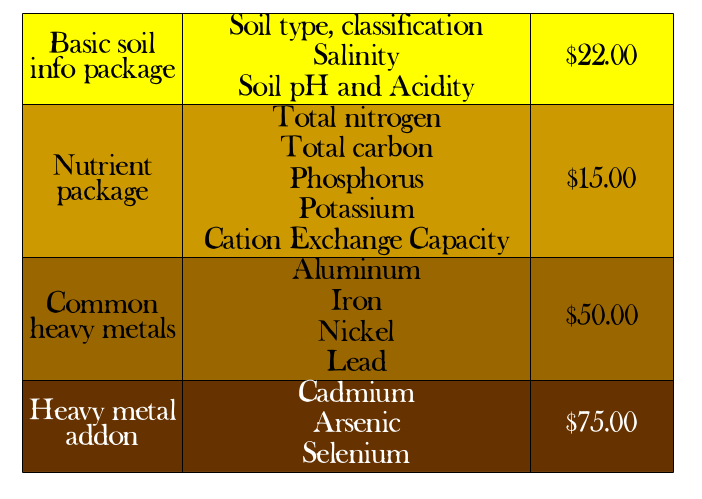Importance of Soil Analysis
Soil is the very foundation we live on. We grow our food in it, we walk on it, and we play in it. A healthy soil can create life, while a poor soil slowly saps it away.
Thankfully, a poor soil can be corrected… if you know how and what needs to be done.
That’s where a soil analysis test comes in. At the very least, from a test you can begin to understand the soils structure, the amount of macronutrients, and even the amount of micronutrients with some tests. Each test tells a little more of the soil’s story.
What to test for (and when).
At the very minimum, you should have a soil texture and macronutrient test done. This is gives the basics about the land itself. Here’s a break down of the type of test and it’s uses.
Soil texture can tell you a lot of things. It can tell you how well-drained you can expect the soil to be, how the nutrients will likely adhere to the soil particles, and how well the roots of particular plants will fair within the area of the that soil type.
Macronutrients are the nutrients plants use to be able to grow, thrive, and reproduce. They are nitrogen, potassium, phosphorus, calcium, magnesium, and sulphur. Testing for these macronutrients allows you to predict how much of what kind of fertilizers you will need to keep your plants healthy, happy, and productive.
pH is a key to releasing nutrients that may remain locked in the soil particles. A pH that is balanced for the soil plant type will release just the right amount of nutrients that the plant prefers to function well and look beautiful.
Just like humans need smaller amounts of some nutrients, so do plants. These are called micronutrients. They are boron, copper, iron, chloride, manganese, molybdenum, and zinc. And, just like us, these micronutrients are often what allow a plant’s system to run efficiently. They can usually be added to the soil by adding things like grass clippings, but they may be locked up due to a pH imbalance.
These tests are the minimum you should do for your soil when plotting new land or trouble shooting a problem area that used to thrive, but now shows some signs of a weakening ecosystem no matter how careful you are with watering and compost applications. You can figure out the soil texture with either a sediment test or a field texture test.
Soil nutrients can be tested quickly and confidently at home with a simple kit that you can pick up at a hardware store. (Or, of course I can do them for you.) It’s understanding the results and how they apply to your situation that is the trickier part.
You can find the directions for both tests soil tests and a walk through of soil nutrients in this DIY workshop: Acids and Basics of Soil, which is a pay what you want workshop. The workshop also shows you how to amend your soils to correct for situations with organic ways.
There are times when you might need to check for something more dangerous.
Like lead or arsenic left over from days of lead-based paint in houses or if you’ve acquired property from a former business. Unfortunately, they don’t sell test kits for this at the hardware store. You’ll have to either send your soils to a university that does the testing.
Or have me come out to take the samples and test them for you.
Here’s how it works:
Either I can come out and take the samples for $50 + .56 cents/mile (plus per diem as applicable), or you can send me the samples and a check to
Insanitek Research and Development,
CO Grace Conyers
PO Box 80142
Indianapolis, IN 46280
The soil testing packages I currently offer are:
Turn around times for testing are generally 48 hours to one week depending on the test requested and your place in the queue. I take mail in orders on a first come, first serve basis, and priority is given to those I go out and collect.
This collection does not include a field survey. However, if a field survey and soil sampling are requested at the same time, then the $50 fee is waved.
